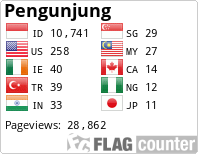DEVELOPING STUDENTS’ DESCRIPTIVE WRITING ABILITY BY USING ANIMATION MOVIE
DOI:
https://doi.org/10.55606/sokoguru.v1i2.156Keywords:
Animation Movie, Descriptive Writing Ability, Boarding SchoolAbstract
This study's objective is to study how using animated movie might help students improve their writing skills. One class served as the research sample for the pre-experimental methodology used in this study. In the first year of the MA Muhajirin, As'adiyah Kampiri, served as the research sample. Twenty students made up the study's sample. In order to select the sample for the study, the researcher employed the cluster random sampling technique and chose X A. Their understanding of the subject matter for text writing was made simple and enjoyable by the audio and visual mix. It was also acceptable for junior high school kids to get excited and interested in writing in order to hone their descriptive text-writing abilities. Writing tests were used to gather data on the students' descriptive writing abilities, which were then evaluated using SPSS 20. There were noticeable improvements, as seen by the pre-test and post-test results. The pupils' experimental post-test score of (82.11) was greater than their pre-test score, which served as evidence (52.63). The results also revealed that the probability value (0.00) was less than the level of significance (0.05). Based on the findings, the researcher concluded that using animation movies could help students in their first year of MA strengthen their descriptive writing skills. As'adiyah Kampiri Muhajirin.
Downloads
References
Aisyah, S., & Haryudin, A. (2020). Instructional Media Used in Teaching English. PROJECT (Professional Journal of English Education), 3(6), 737.
Buckingham, D. (2007). Media education goes digital: an introduction. Learning, Media and technology, 32(2), 111-119.
Barak, M., Ashkar, T., & Dori, Y. J. (2011). Learning science via animated movies: Its effect on students’ thinking and motivation. Computers & Education, 56(3), 839-846.
Bean, J. C., & Melzer, D. (2021). Engaging ideas: The professor's guide to integrating writing, critical thinking, and active learning in the classroom. John Wiley & Sons.
Ciekanski, M., & Chanier, T. (2008). Developing online multimodal verbal communication to enhance the writing process in an audio-graphic conferencing environment. ReCALL, 20(2), 162-182.
Creswell, J. W. (2014). Qualitative, quantitative and mixed methods approaches.
Dhir, R., & Raj, A. (2018, December). Movie success prediction using machine learning algorithms and their comparison. In 2018 first international conference on secure cyber computing and communication (ICSCCC) (pp. 385-390). IEEE.
Elkatawneh, H. H. (2016). Comparing qualitative and quantitative approaches. Walden University, 3-4.
Ferretti, R. P., & Graham, S. (2019). Argumentative writing: Theory, assessment, and instruction. Reading and Writing, 32(6), 1345-1357.
Gibbs, A. (2007). Writing as method: attunement, resonance, and rhythm. In Affective methodologies (pp. 222-236). Palgrave Macmillan, London.
Hyland, K. (2004). Genre and second language writing. University of Michigan Press.
Kamelia, K. (2019). Using video as media of teaching in English language classroom: expressing congratulation and hopes. Utamax: Journal of Ultimate Research and Trends in Education, 1(1), 34-38.
Kellner, D., & Share, J. (2005). Toward critical media literacy: Core concepts, debates, organizations, and policy. Discourse: Studies in the cultural politics of education, 26(3), 369-386.
Kukleva, A., Tapaswi, M., & Laptev, I. (2020). Learning interactions and relationships between movie characters. In Proceedings of the IEEE/CVF Conference on Computer Vision and Pattern Recognition (pp. 9849-9858).
Laptev, I., Marszalek, M., Schmid, C., & Rozenfeld, B. (2008). Learning realistic human actions from movies. In 2008 IEEE Conference on Computer Vision and Pattern Recognition (pp. 1-8). IEEE.
Lee, K., Park, J., Kim, I., & Choi, Y. (2018). Predicting movie success with machine learning techniques: ways to improve accuracy. Information Systems Frontiers, 20(3), 577-588.
Namaziandost, E., & Nasri, M. (2019). The impact of social media on EFL learners’ speaking skill: a survey study involving EFL teachers and students. Journal of Applied Linguistics and Language Research, 6(3), 199-215.
Orlanda-Ventayen, C. C., & Ventayen, R. J. M. (2017). Role of social media in education: A teachers’ perspective. ASEAN Journal of Open and Distance Learning, 9(2).
Prior, P. (2013). Writing/disciplinarity: A sociohistoric account of literate activity in the academy. Routledge.
Quader, N., Gani, M. O., Chaki, D., & Ali, M. H. (2017, December). A machine learning approach to predict movie box-office success. In 2017 20th International Conference of Computer and Information Technology (ICCIT) (pp. 1-7). IEEE.
Sakat, A. A., Zin, M. Z. M., Muhamad, R., Anzaruddin, A., Ahmad, N. A., & Kasmo, M. A. (2012). Educational Technology Media Method In Teaching And Learning Progress. Advances in Natural and Applied Sciences, 6(3), 484-490.
Snelson, C., & Perkins, R. A. (2009). From silent film to YouTube™: tracing the historical roots of motion picture technologies in education. Journal of visual literacy, 28(1), 1-27.
Sukmahidayanti, T. (2015). The utilization of instructional media in teaching english to young learners. Journal of English and Education, 3(2), 90-100.
Thomas, L. M. (2019). Territories and categories of academic writer: Possibilizing through the act/art of writing. In Academic Writing and Identity Constructions (pp. 13-29). Palgrave Macmillan, Cham.
Webster, J., & Watson, R. T. (2002). Analyzing the past to prepare for the future: Writing a literature review. MIS quarterly, xiii-xxiii.
Widiati, U., & Cahyono, B. Y. (2016). The teaching of EFL writing in the Indonesian context: The state of the art. Jurnal Ilmu Pendidikan, 13(3).








